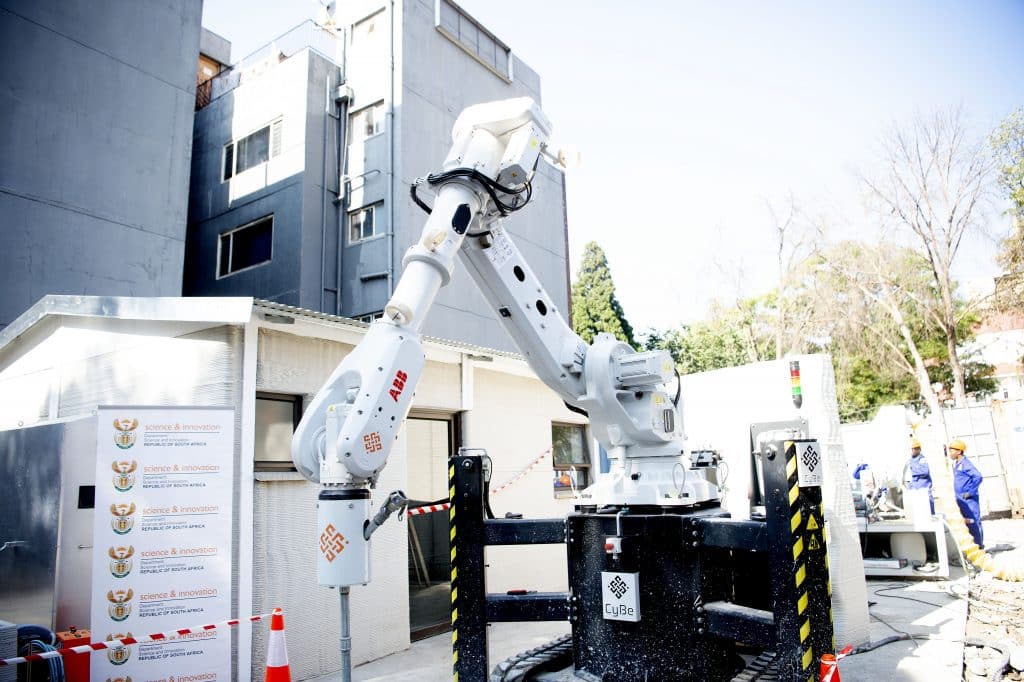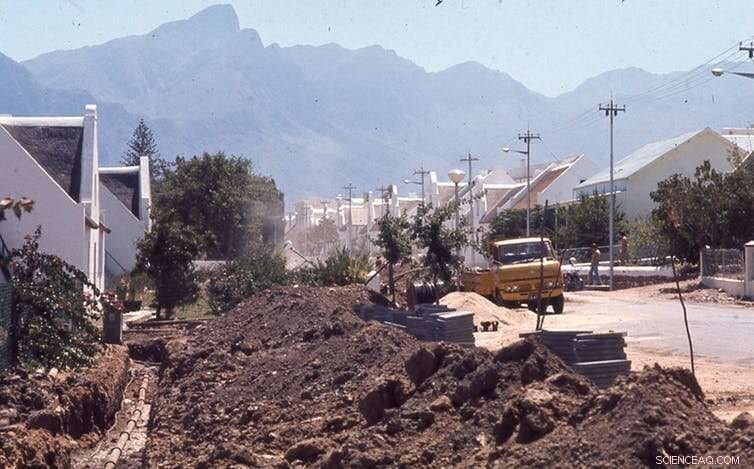
20/06/2023: CyBe Construction, a leading provider of 3D concrete printers, and the South African Housing & Infrastructure Fund (SAHIF) have joined forces in a groundbreaking collaboration aimed at tackling the pressing housing shortage in South Africa. The joint effort will leverage innovative 3D concrete printing technology to deliver faster, cheaper, and more sustainable homes. This strategic cooperation comes in response to the urgent need for affordable housing and represents a significant step toward achieving the United Nations’ goal of providing safe and accessible housing for all by 2030.
South Africa’s Critical Housing Crisis
South Africa is currently facing a severe housing crisis, with an ever-increasing backlog that has persisted for years. According to Dr. Blade Nzimande, Minister of Higher Education, Science and Technology, the country currently faces a shortage of over 2.3 million houses. This backlog of affordable housing has now reached the dark milestone of persisting for over two decades, highlighting the urgent need for affordable housing solutions. Though the government is making significant progress in the provision of homes in the country, the demand for housing keeps rising every day. Unfortunately, the country’s housing crisis isn’t unique. Indonesia, for example, currently faces a shortage of over 10 million homes. Mexico needs to scale up its housing construction to 800,000 units a year to keep up with demand. India is estimated to have a housing shortage of over 38 million by 2030. It is evident that something needs to be done.
Building the Future Together
To address this critical issue, CyBe Construction (CyBe.eu) and SAHIF (sahiffund.co.za) have signed a Memorandum of Understanding (MoU), combining their expertise and resources to come to a solution. This solution can be accredited to an alternative building method to substitute conventional construction: 3D concrete printing (3DCP). 3DCP has the ability to deliver homes quicker, cheaper, and more sustainable. “We believe that construction 3D printing will significantly alter and positively disrupt how human settlements will be delivered in South Africa,” said Minister Nzimande during a demonstration of the technology by the University of Johannesburg (UJ). The university’s demonstration showcased the capabilities of the CyBe Robot Crawler: a mobile 3D printer capable of efficiently constructing homes within hours. This printer is a product of CyBe Construction, the provider of 3D printing software and hardware in the MoU issued to solve the South-African housing crisis. As a market-leading 3D concrete printer company with a decade of experience, the company has demonstrated time after time being able to offer faster, cheaper, and more sustainable construction solutions. Their demonstration at UJ reaffirmed their expertise once again, making them the ideal candidate for the cooperation with SAHIF. The South African Housing and Infrastructure Fund (SAHIF) specializes in the development and application of sustainable materials and innovative technologies in the construction sector. SAHIF is the first fund in South Africa to embrace 3DCP in their approach. The collaboration between the two sustainable innovators, planning on rolling out large-scale development projects around the country, is poised to transform South Africa’s construction industry.

Turning Adversity into Progress
Though the collaboration between Cybe and SAHIF was being planned and prepared for some time now, the inauguration of the MoU still had a rather coercive trigger. The occurrence that lifted the agreement of the ground was a recent earthquake in South Africa. The seismic event, of which the epicenter is believed to be in Johannesburg’s neighboring city Boksburg, caused extensive damage to buildings in a large scale around the city. The earthquake served as the final push for the initiation of the MoU. SAHIF’s CEO, Rali Mampeule, emphasized the pressing need for affordable but resilient housing by stressing that “not only are 3D printed houses more affordable and quicker to build, but we also know they are sturdy enough to withstand seismic forces that took us by surprise this week.”
Earthquake-Proof Structures with 3D Printing
The adoption of 3D concrete printing technology provides a groundbreaking solution for constructing earthquake-resistant houses in South Africa. The inherent flexibility of 3DCP allows for the customization of structures, specifically tailored to withstand seismic activity. The technique also allows for the creation of intricate shapes that are reinforced with earthquake-resistant materials such as steel or polymer. The key factor in the method’s ability to absorb the seismic energy of an earthquake, however, can be attributed to CyBe Construction’s building material. The company has developed its own CyBe Mortar, an earthquake-proof mortar specifically formulated for 3D printing. This material combines high-strength aggregates and fibers, significantly bolstering its resistance to seismic forces. With superior durability and flexibility, this material stands out as an ideal option for constructing earthquake-proof houses. Additionally, its reduction of CO2 emissions by 32% as compared to traditional cement-based mortars promotes sustainability in the construction industry. This earthquake-resistant material, when combined with the precision, efficiency, and flexibility of 3D concrete printing, creates homes that not only prioritize safety but also showcase sustainability and style.

Fast, Affordable, and Sustainable Construction
The benefits of 3D concrete printing extend far beyond earthquake-proofing. The technique enables faster, cheaper, and more sustainable construction, making it an ideal solution for addressing the housing shortage in South Africa. The method almost entirely automates construction, resulting in significant time and labor hour savings. It also ensures optimal material usage, meaning less waste and lower material costs. This lower waste, along with the use of eco-friendly materials, contributes to more sustainable construction practices. CyBe Construction brings over ten years of experience in 3D concrete printing, offering a wealth of expertise and know-how in this cost-effective, efficient, and sustainable construction method. This makes them the perfect entity to work together with SAHIF. Combining SAHIF’s proficiency in South African construction and CyBe Construction’s competence in 3D concrete printing, the parties are well-equipped to address the pressing housing crisis in the country.
A Blueprint for Housing Success
The collaboration between CyBe Construction and SAHIF represents a significant milestone in addressing South Africa’s housing shortage. The transformative power of 3D concrete printing technology, with its ability to deliver faster, cheaper, and more sustainable homes, holds immense promise for the construction industry. As the urgent need for affordable housing is not bound to South Africa, as demonstrated by the housing backlogs in countries like Indonesia, Mexico, and India, the cooperation is poised to revolutionize the way homes are built not only in South Africa but also worldwide. With its proven effectiveness, 3D concrete printing can offer a scalable and efficient solution to this pressing global challenge, and the collaboration between CyBe and SAHIF can be seen as a precedent for solving the global housing crisis. By combining innovation, expertise, and a shared vision, CyBe Construction and the South African Housing and Infrastructure Fund are leading the way towards a future where safe, accessible, and sustainable housing is within reach for all.